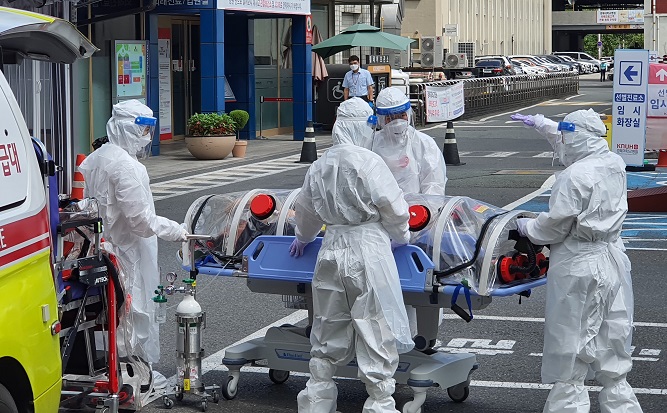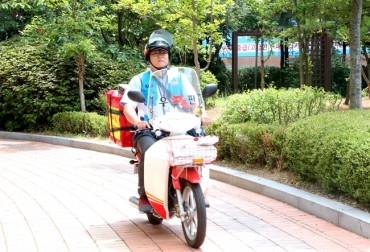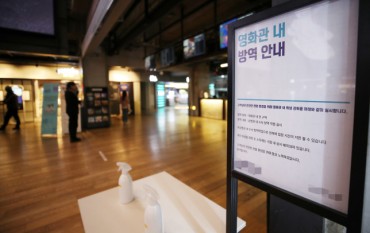
This photo taken by a Yonhap News TV reporter shows medical workers moving a confirmed patient of the new coronavirus to the Kyungpook National University Hospital in Daegu, 302 kilometers southeast of Seoul, on Aug. 30, 2020.
SEOUL, Aug. 31 (Korea Bizwire) — South Korean scientists have discovered a way to quickly and accurately detect airborne viruses that could help public health and quarantine efforts, a state-run research university said Monday.
The technique utilizes electrostatic force to capture and condense viruses in the air and a special filter to check collected samples for contaminants, a research team led by Jang Jae-sung at the Ulsan National Institute of Science and Technology said.
“The use of an electric field allows air samples to be collected without damage so a paper-based sensor can check for the antigens and antibodies of viruses,” the micro and nanosensor expert said.
He said this approach is very effective and precise and can greatly help public health workers fighting contagious outbreaks, adding that liquid particles as small as 1 micrometer have been successfully collected.
The current method of airborne sample collection is usually carried out using vacuum devices that tend to damage the samples and cannot collect very small particles.
Jang claimed that tests carried out on the type-A H1N1 flu virus showed good results, adding that since the coronavirus is similar to the flu in structure and size, the newest detection technology should be applicable to COVID-19 after additional research.
The university in Ulsan, about 410 kilometers southeast of Seoul, said the findings have been published in the latest issue of the international Environmental Science and Technology journal.
(Yonhap)






